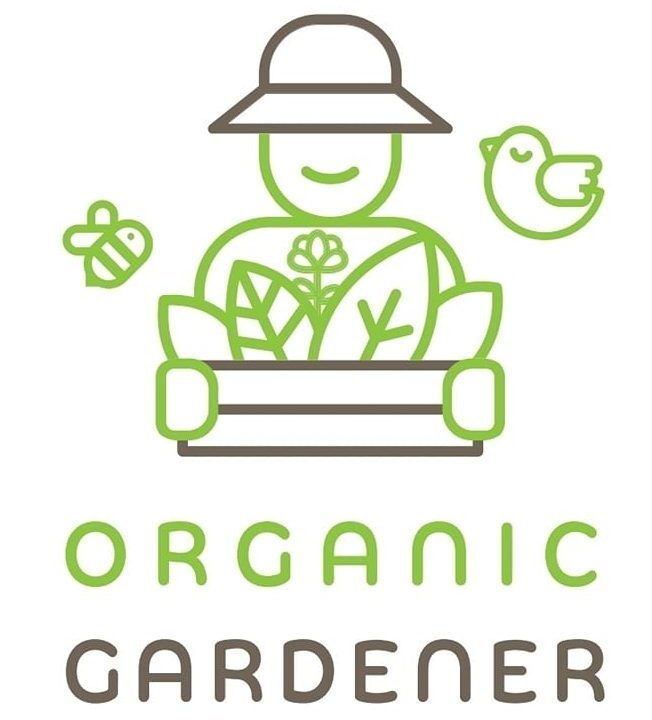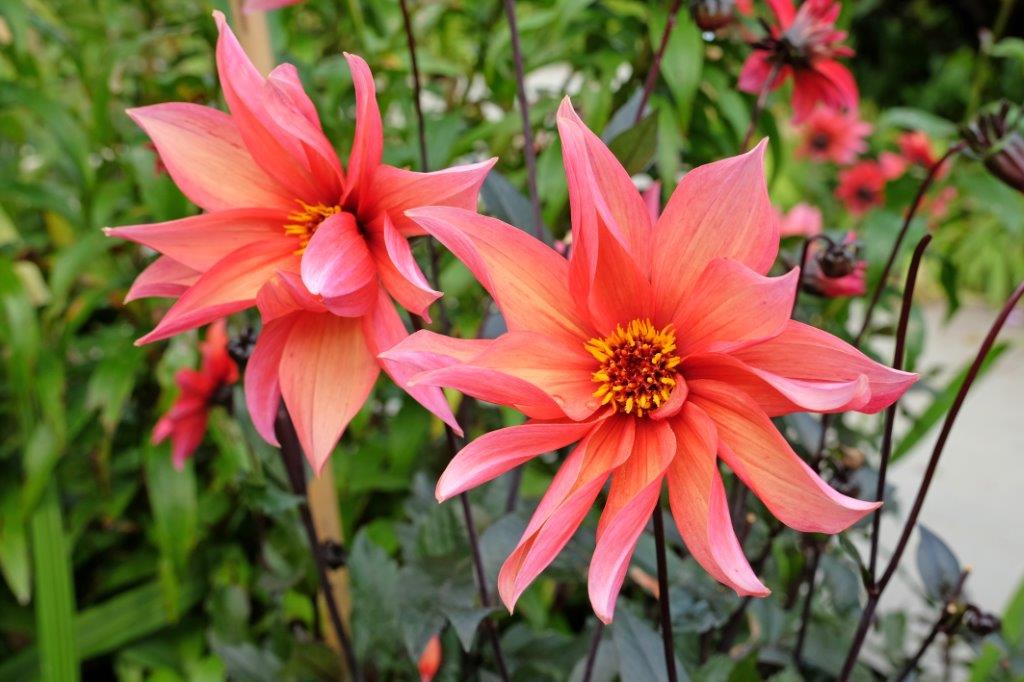Dahlias are absolutely adorable flowers that bring bright colours and vibrancy to any garden. As our Dahlia range is organically grown you are assured they won’t harm pollinators too. They come in a variety of colours and sizes, and are great as cut flowers making them a popular choice among gardeners. If you’re interested in growing dahlias, there are a few things you need to know to ensure they will thrive.
-
Choose the right location: Dahlias need a sunny location that receives at least 6 hours of direct sunlight per day. They also need well-drained soil that is rich in organic matter. Avoid planting dahlias in low-lying areas that are prone to waterlogging, as this can cause root rot.
-
Plant at the right time: Dahlias are tender perennials that are typically grown outside from late May and June. You can kick-start your dahlias by planting them in pots undercover or in a glasshouse. They should be planted outside in spring after the last frost has passed. If you’re in a warmer climate, you can plant them in the fall for winter bloom.
-
Prepare the soil: Before planting your dahlias, prepare the soil by digging in plenty of compost or well-rotted manure. This will help improve soil fertility and drainage.
-
Planting: When planting dahlias, dig a hole that is twice as wide as the tuber and deep enough to accommodate the entire tuber. Place the tuber in the hole with the eye facing up and cover it with about 5 cm. soil and make sure to keep the growing points up. Water thoroughly and add a layer of mulch to help retain moisture and suppress weeds.
-
Watering: Dahlias need regular watering to thrive. Water deeply once or twice a week, depending on the weather and soil conditions. Be careful not to overwater, as this can cause the tubers to rot.
-
Fertilizing: Dahlias are heavy feeders and benefit from regular fertilization. Apply an organic fertilizer like liquid seaweed or alfalfa meal every 4-6 weeks throughout the growing season.
-
Staking: Dahlias can grow quite tall and may require staking to prevent them from falling over. Install stakes at planting time and tie the stems to the stakes as they grow.
-
Deadheading: To encourage continuous bloom, it’s important to deadhead your dahlias regularly. This involves removing spent flowers by cutting the stem just above the top leaf bud.
-
Disease and pest control: Dahlias can be susceptible to a variety of diseases and pests, including powdery mildew, spider mites, and aphids. To prevent these problems, keep your plants well-spaced to promote good air circulation, and remove any infected or infested leaves or flowers.
-
Digging and storing tubers: In colder climates, dahlias need to be dug up and stored over the winter to prevent frost damage. Wait until the foliage has died back, then carefully dig up the tubers and shake off any excess soil. Allow them to dry in a cool, dry place for a few days before storing them in a cool, dark place for the winter. You can also keep them in the soil, but then you need to add a thick mulch layer of dried leaves or straw before the frost period starts (approximately 20 to 30 cm.).
In conclusion, growing dahlias can be a rewarding experience, but you need to make sure to follow the right steps. By choosing the right location, planting at the right time, preparing the soil, watering, fertilizing, staking, deadheading, and taking steps to prevent them from frost, you can enjoy beautiful dahlias in your garden year after year.
Video Tutorial How to Grow Organic Dahlias
Why choose Organic Dahlias?
Organic dahlias are dahlias that have been grown using organic farming practices, which prioritize the use of natural fertilizers, pesticides, and soil approving methods over synthetic chemicals. Organic farming practices are designed to promote soil health and biodiversity, reduce the use of non-renewable resources, and minimize environmental impact.
When it comes to dahlias specifically, organic growers may use natural fertilizers such as compost, manure, and bone meal to provide nutrients to the plants. They may also use cover crops, crop rotations, and companion planting to manage pests and promote soil health.
Organic dahlias can be grown for ornamental purposes, as well as for cut flowers. They come in a wide variety of colors, shapes, and sizes, and can be a beautiful addition to any garden or floral arrangement. Because they are grown using organic practices, they are generally considered to be safer for the environment and for people who may come into contact with them.
We offer organic dahlias which are either European Organic Certified by SKAL or certified by Soil Association in the UK.
Single-flowered Organic Dahlias
Single-flowered dahlias are a type of dahlia plant that produces flowers with a single row of petals surrounding a central disc. Unlike the more common double-flowered dahlias, which have multiple layers of petals, single-flowered dahlias have a simpler, more elegant appearance.
Single-flowered dahlias come in a wide variety of colours and sizes, from small pompon dahlias to larger dinner plate dahlias. They are also available in a range of flower shapes, from round and symmetrical to more irregular and spiky. Organic Dahlia ‘Hartenaas’ and Organic Dahlia ‘Topmix Apricot’ are well known single-flowered dahlias.
Single-flowered dahlias are popular with gardeners and flower enthusiasts because they are easy to grow and provide a long-lasting display of colorful blooms throughout the summer and into the fall. They are also attractive to pollinators such as bees and butterflies, making them a great choice for gardens that prioritize biodiversity.
Some popular single-flowered dahlia varieties include ‘Impression fantastico’ (a magenta variety with green foliage), ‘David Howard’ (a vibrant orange variety), and ‘Waltzing Mathilda’ (an apricot pink variety with dark foliage).
Double-flowered Organic Dahlias
Double-flowered dahlias are a type of dahlia that have extra layers of petals, giving them a fuller, more voluminous appearance like Organic Dahlia ‘Avignon’, Organic Dahlia ‘Sylvia (Maren)‘ and Organic Dahlia ‘Lavender Perfection’. They are a popular choice for gardeners and florists due to their showy blooms and wide range of colours and sizes.
Double-flowered dahlias can be classified into several different types based on their petal arrangement, such as ball dahlias, pompon dahlias, cactus dahlias, and waterlily dahlias. Ball dahlias have spherical-shaped blooms with tightly packed petals, while pompon dahlias have smaller, rounder blooms with tightly packed petals as well. Cactus dahlias have long, pointed petals that curve towards the centre of the flower, and waterlily dahlias have broad, flat petals that overlap each other.
Double-flowered dahlias come in a wide range of colours, including pink, red, yellow, orange, white, and purple. They can also have various patterns on their petals, such as stripes, spots, or blending of multiple colours.
In terms of care, double-flowered dahlias require well-draining soil and full sun to thrive. They should be watered regularly but not overwatered, as excessive moisture can cause root rot. Deadheading spent blooms can encourage the plant to produce more flowers. In colder climates, dahlias can be dug up and stored indoors during the winter to protect them from frost damage.
Overall, double-flowered dahlias are a stunning addition to any garden or floral arrangement, and their showy blooms are sure to make a statement.




